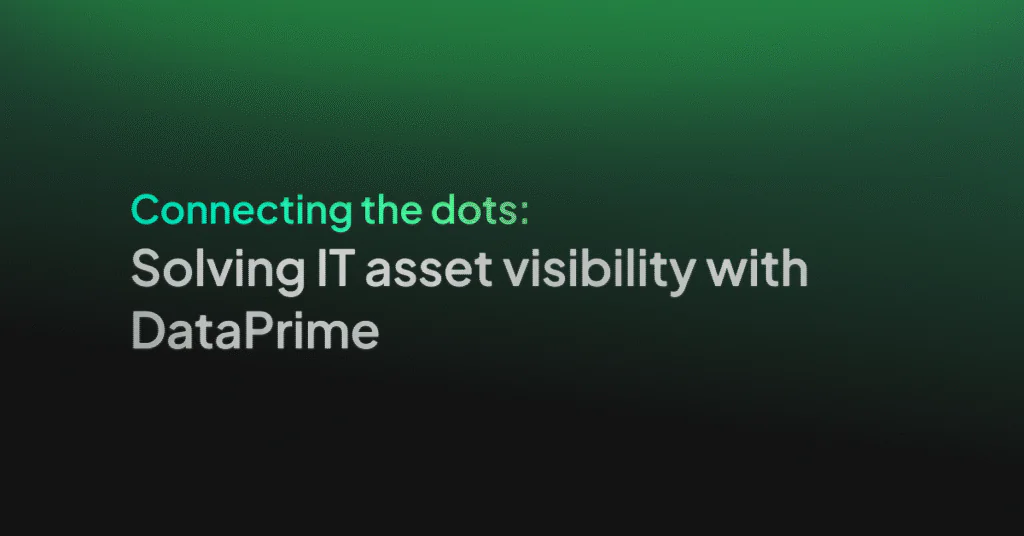SaaS Observability Platforms: A Buyer’s Guide

Observability is the ability to gather data from metrics, logs, traces, and other sources, and use that data to form a complete picture of a system’s behavior, performance, and health. While monitoring alone was once the go-to approach for managing IT infrastructure, data observability goes further, allowing IT teams to detect and understand unexpected or unknown events.
In this article, we will explore the benefits your organization can gain from adopting a full-stack observability platform and outline the features to look for in a platform’s offering and the pitfalls to avoid.
What benefits do you get from an observability platform?
Observability platforms offer a range of benefits, including improving user experience, monitoring SLA metrics, gaining more visibility over IT infrastructure, and helping with troubleshooting.
By tracking user behavior, your organization can easily identify most frequently used functionalities and areas where users encounter issues, and act on them. Observability platforms also let you aggregate metrics over your entire system and define Service Level Agreement metrics you want to keep track of. This ensures that your organization has visibility over those metrics and gets notified when you breach your SLA agreement.
Moreover, having all system metrics in one place lets your IT teams gain insight into how the system behaves as a whole, avoiding the need to log into multiple services and piece the data back together. Observability platforms typically provide flexible options for viewing this data with querying, sorting, and filtering capabilities. This helps developers troubleshoot issues faster and more efficiently, ultimately reducing Mean Time To Detect and Mean Time To Resolve incidents. It also helps increase your developers’ happiness and retention by reducing the time spent looking for answers, avoiding false alarms that disturb team members, and generally improving the development experience.
By selecting the right observability platform, your organization can avoid the opportunity cost of poor observability and focus on driving new initiatives and developing your product further.
However, it’s essential to carefully consider the platform before choosing one to ensure it meets your organization’s specific needs.

Choosing your observability platform
A good observability platform should have the following features:
Ease of Integration
The platform should be easy to set up and integrate with your current processes. The aim is to simplify your developers’ jobs, not burden them with complex and cumbersome integration work.
It should support integrations with all the different components of a system, whether it is databases or other storage solutions, services, networks, etc. The more parts of your system you hook up to the observability platform, the more valuable insights you will get.
It should also offer flexibility in the integration and support plenty of different tools to allow you to work with the ones you feel comfortable using and those that fit your current workflow.
Security
The observability platform you choose to work with must be a fully secure solution, as it will receive massive amounts of sensitive data about your systems and users. If your organization has specific security rules and restrictions, you must ensure that the platform you choose meets those.
Support
A good observability solution can provide support through well-written documentation and dedicated training for your IT team if needed. If something malfunctions on their side, the observability platform’s internal teams need to be responsive and resolve the problem quickly to avoid any data loss or security breaches.
Data visualization
The platform should offer a user-friendly interface for your IT team, with good navigation and data visualization components. It should also provide automated abnormal event detection and alerts.
Data and Analysis capabilities
You need to ensure the platform can handle and scale to large volumes of data while simultaneously having fast retrieval rates. Make sure it also offers long data retention periods. This will allow you to browse your data rapidly and go back in time as far as you need.
Cost-effectiveness and transparency
While you need excellent data analysis capabilities, the platform must be cost-effective. Storing large volumes of data and offering fast query times can become very expensive, so you must ensure that the overall price is competitive and that the platform has no hidden cost.

Common Pitfalls in Observability Platforms
There are also some common pitfalls to avoid when shopping for an observability platform. This is a non-exhaustive list, so do your due diligence.
Only one framework to integrate with
Avoid an observability platform that offers only one instrumentation framework (usually their own) to manage and integrate with. This incurs a heavy configuration burden on your IT teams and creates vendor lock-in. Instead, choose an open-source-compatible solution or one that offers more common framework alternatives.
Poor user experience
A poor user experience and a steep learning curve will make it difficult for your IT team to buy into the new solution. It will likely not be adopted or used efficiently by the whole team, placing instead the knowledge and responsibility of the system in the hands of the few developers in charge of the integration.
Pricing models that are hard to predict
Some pricing models are complicated to predict. Specifically, the pricing models per host cost + per GB cost are tricky since it is hard to guess the amount of data sent by each component of the system when first setting up the observability tool. Even later, as your system evolves and more components are created, scaled up or down, deleted or replaced, the cost can vary drastically.
No meaningful trial period or low-cost plan
Some tools require the customer organization to purchase the enterprise package directly, as the trial period or low-cost plan only gives access to a handful of features. This requires organizations to spend a lot of money before seeing the platform’s benefits and whether this is right for them.
Expensive storage solutions
Some platforms deem it necessary to index and store all the data in high-speed, high-cost storage. Instead, you should prefer the ones that allow some data segregation, storing the less used data in low-cost storage since it doesn’t need to be retrieved that often.
Summary
A good observability strategy gives more visibility over an organization’s IT infrastructure, helps monitor key metrics like SLAs and troubleshooting incidents, and improves user experience. It also increases developer productivity, allowing the development resources to be allocated elsewhere to drive innovation.
When shopping around for the observability solution that will fit your needs, remember to look for a secure, scalable, easy-to-integrate, and user-friendly solution with no hidden cost or hard-to-predict pricing model. Don’t hesitate to try before you buy so you don’t commit to an expensive and low-value tool for your company!




